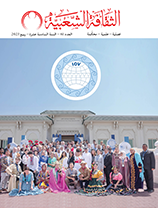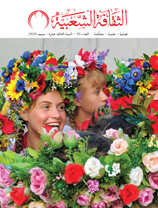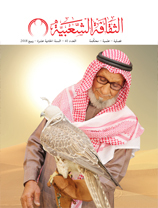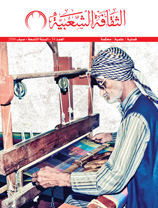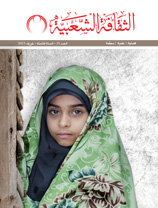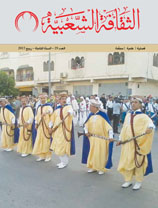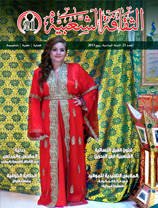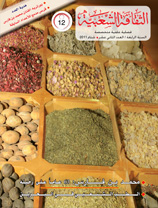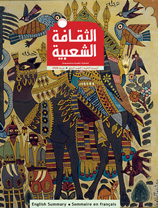Classical art of Indian heritage: The play Kathakali
Issue 39

By Mohammad Ali Al Wafi Karwatil, Researcher at the Centre of Arabic and African Studies at Jawaharlal Nehru University, New Delhi
Researchers of Kerala’s classical arts often refer to Kathakali, a classical theatrical dance with a variety of characters and colourful costumes. Various musical instruments accompany the dance, which involves mime and body language.
This classical art dates back to the seventeenth century, and the costumes, movements, mime, themes, melodies and musical instruments came later.
Fine art, music, poetry, prose, architecture, painting, sculpture, dance, singing and acting seek to convey beauty. Dance and music were means of expression for primitive peoples. People have used dance to express their thoughts and emotions – including hope, despair, cruelty, tenderness, sadness and joy – since the beginning of history. Dance has existed for as long as people have existed.
When man was unable to express himself with words, he used his body to express different mental and emotional states. There were dances for joy, sadness, rain, magic, enemies, war and battles, and these dances were accompanied by music or melodies.
Like all other arts, this classical dance has gone through many stages of development. In the beginning, the dance was performed as entertainment for kings and members of the royal court. Then innovative artists changed the classical form, and it evolved into a theatrical performance accompanied by music, mime and acting. One of the most important characteristics of this classical art is the dependence on the expressiveness of the eyes and on symbolic hand gestures.
Academics who specialise in the Indian classical arts agree that the 19th century was the Golden Age of Kathakali. The artist Irayimman Thampi enriched the songs in Kathakali immensely.
Kathakali’s playwrights were Hindu, specifically upper class Hindus. Ramanattam is a temple dance associated with the Hindu god Rama. The epic Ramayana is the first story to be enacted in a Kathakali performance. Over time, Hindu epics, ancient Puranas and ancient Hindu myths were added.
Kathakali is not just a dance expressed by bodily movements, but an integrated language that communicates the dancers’ thoughts and feelings to the audience.
Dance is a peerless way of expressing joys and sorrows. Like other art forms, Kathakali reflects the essence of the humanity.











